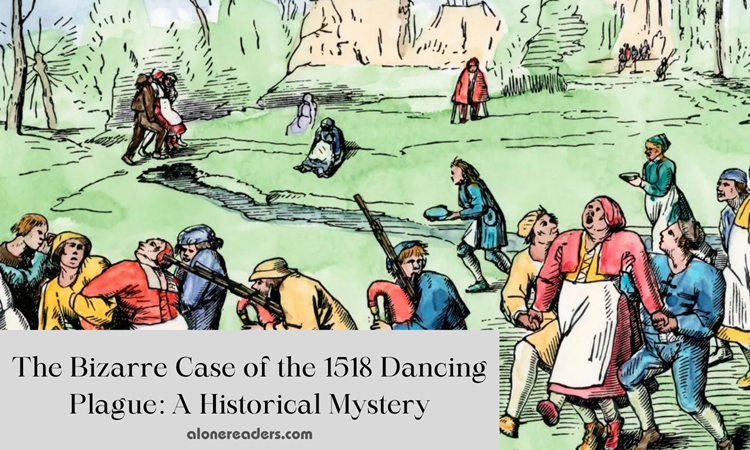
In the annals of historical mysteries, few events are as perplexing or as harrowing as the so-called Dancing Plague of 1518. This bizarre phenomenon, also known as the Dance Epidemic, seized the city of Strasbourg, Alsace, in a frenzy of unstoppable dancing that claimed lives and confounded onlookers. Over 400 individuals were ensnared by an invisible force, compelling them to dance tirelessly until many succumbed to heart attacks, strokes, or sheer exhaustion. The question of what unleashed this wave of relentless dancing remains unanswered to this day, making it one of the most enigmatic episodes of mass hysteria ever recorded.
The outbreak began inconspicuously in July 1518 when a lone woman, Mrs. Troffea, stepped into the streets of Strasbourg and began to dance with wild abandon. Without any music to guide her, she danced uncontrollably, her feet pounding the cobblestones from morning till night. Within a week, her solitary performance had morphed into a collective mania as 34 additional people joined her in her ceaseless gyrations.
As the days wore on, the numbers swelled to around 400 dancers. The phenomenon reached such a critical stage that it was said to claim as many as 15 lives per day, as people collapsed from the physical toll of non-stop dancing. What began as a peculiar curiosity swiftly transformed into a public health crisis, with civic leaders and physicians at a loss to explain or treat the affliction.
The contemporary explanation was as unusual as the event itself. Physicians of the day, operating under the medical paradigms of humoral theory, dismissed supernatural causes and instead diagnosed the afflicted with "hot blood." Rather than prescribing rest or traditional medical interventions, they endorsed the continued dancing, theorizing that the sufferers could only recover by dancing the fever out of their systems. This led to the astonishing decision by authorities to encourage the dancing: a wooden stage was constructed, and professional dancers were even hired to keep the afflicted moving.
It’s a grim footnote in history that the cure prescribed may have only exacerbated the death toll, as the exhausted dancers were urged to continue their lethal exertions. The stage became a spectacle, with musicians playing to sustain the dancers, drawing curious onlookers from across the region.
Modern scientists have since scoured historical accounts, medical records, and local lore in an attempt to understand what could have caused such an extraordinary outbreak. One leading hypothesis suggests that the dancers were victims of ergot poisoning. Ergot is a fungus that contaminates rye and other cereals, and when ingested, its toxic products can induce spasms, hallucinations, and the sensation of burning in the limbs, which could have been interpreted as an urge to dance.
Another theory posits that the Dancing Plague was a case of mass psychogenic illness, a form of collective delusion sparked by the stress of living through famine, disease, and the spiritual tumult of the early 16th century. In this reading, the dance was a physical manifestation of a population pushed to the brink of despair.
Whatever the cause, the Dancing Plague of 1518 remains a powerful reminder of the mind's capacity to influence the body, and the ways in which communities can be overtaken by the inexplicable. It challenges our modern sensibilities with its surreal narrative, and it continues to dance through the pages of history as a macabre waltz that began with one woman's steps and ended in a dance of death.
The legacy of the Dancing Plague is not solely one of tragedy and bewilderment, however. It also stands as a testament to the enduring human desire to understand the unknown, and to the stories that continue to captivate us, centuries after the music has stopped.
In conclusion, the Dancing Plague of 1518 is more than a historical oddity; it is a poignant example of how fear, illness, and the mysteries of the mind can converge in startling and deadly ways. It beckons us to look closer at the past and encourages us to consider the psychological undercurrents that have shaped human history in ways we might never fully comprehend.